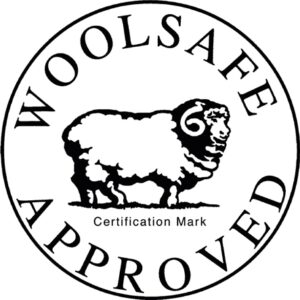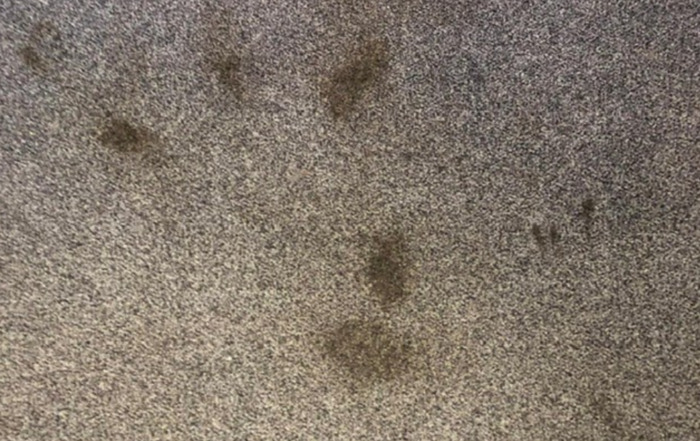Prochem Sales Director, Phil Jones, explains why they are not…
When it comes to cleaning them, carpets can often be perceived as singular in that you get a machine, some solution, and off you go.
But they differ, as cars do: they get you from A to B, yes, but they do it differently.
And so with carpets, not only in the cleaning processes available but also in the chemistry a certain carpet (or more importantly, its fibres) can bear.
Many cleaners get apprehensive cleaning carpets and that’s down to the whispered horror stories of shrinkage, colour loss, stretching, or those black or brown patches that can remain after cleaning.
Nobody wants to explain these to the customer, so to avoid this happening, let’s look at the main carpet types being sold and installed in home and commercial environments.
Textile floorcoverings in offices are predominantly carpet tiles. They can be fitted easily and more importantly, individual tiles can be changed as and when required (handy when sorting the problems that the ill-informed cleaner can cause).
Tiles come in a range of colours and patterns, manufactured with either a nylon or polypropylene pile fibre: to clean them without worry demands knowing what chemical solution to use.
If the pile fibre is polypropylene (a synthetic material made from oils) it is deemed to be chemically inert and so is not affected by the chemistry.
However, a nylon fibre, also a synthetic material, is more sensitive to some cleaning chemicals which, in certain circumstances, could cause dye bleed (loss of colour) or a degradation of the fibre.
That’s when it’s useful to know the basics of the pH scale, which measures the strengths of water-based detergents in terms of acidity, neutrality and alkalinity.
(Prochem makes this easier to understand by colour-coding on its packaging. Many of its alkaline cleaning products have a green or blue label on the bottle or tub; neutral-based products generally carry a yellow label; and acidic are orange and red).
So, polypropylene can be cleaned with stronger alkalinity than a nylon fibre should and with fewer issues.
A common issue with carpet tiles is staining. Look at a carpet tile, side on, for a strong secondary backing, which is often bitumen; an oil-based material, like tarmac, it gives the carpet tile a dimensional stability. The enemy is known as bitumen-bleed.
If the operator chooses either a strong alkali or possibly a solvent (oil) based product to remove a greasy or unknown stain from a carpet tile, there is the potential that the detergent may sink into the carpet tile, start to dissolve the bitumen layer, which dries back to the surface leaving a black/brown mark.
This can be difficult or even impossible to remove. Many offices simply change carpet tiles but this comes at extra cost to the infrastructure when in fact the problem can be eliminated by using a solvent-based spotter in a gel format, such as Prochem’s E840 Citrus Gel.

Carpet tile manufacturers are beginning to remove this bitumen layer in favour of a more sustainable material, without affecting the quality and performance of the tile. Recycled fishing nets or recycled plastic bottles can maintain the dimensional stability and fulfil sustainability requirements as well as cutting costs (and saying bye-bye to bitumen-bleed)
In most residential environments, carpets are fitted wall to wall and are made from polypropylene, nylon, polyester, and wool fibres.

Nylon and wool are ‘pH-sensitive’ and should be cleaned with more delicate chemistry, especially products that carry a WoolSafe® approval logo (showing a circle around a sheep).
(Prochem is actually the UK’s largest manufacturer of WoolSafe approved products, with 17 solutions in its range).
A fitted carpet is made in layers with a secondary layer being the back of the carpet. A sign of a good quality carpet is a natural, plant-based material such as hessian (jute) on the back.
However, ‘cellulosic browning’ can be caused by cleaning and/or the use of high alkaline products on a carpet in that the dye within the natural material is affected causing the dye to bleed to the surface. This mark can be difficult to remove.
Once again, manufacturers are making changes to their production processes, which actually have an advantage to the cleaner, as they are removing the natural plant-based material in favour of recycled synthetics (saying by-bye to cellulosic browning).
For over 50 years, Prochem has run training courses for the cleaning industry. It’s one-day carpet cleaning course is particularly popular for cleaners wanting to know about potential pitfalls and how to avoid them.
Visit www.prochem.co.uk/training or contact training@prochem.co.uk


